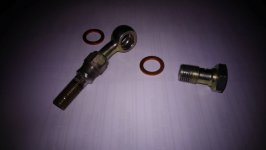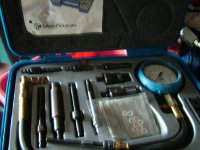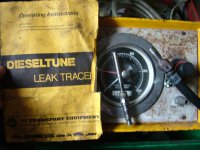Thank you for answer. Do I have to remove the internal hoses before removing injectors?
Not sure what you mean here, perhaps something has got lost in translation. There are no hoses inside the engine, or inside the injector. All hoses are visible, as your pictures show. You will need to remove those, or else you'll need to remove all injectors together as one, which just makes things more difficult.
Bugsymike is suggesting that the injectors may be threaded in, not something I've seen, but I have tried to avoid getting close to diesels.
If the injector is threaded in, then as bugsymike says, it will need unscrewing, requiring a special deep socket. The pipes will have to be off for that.
If the injector is just clamped in, there will be a clamp at the head, and once removed, the slide hammer tool will be needed to get them out. Some swearing may be necessary.
I still doubt that this will find or fix the issue you have, so unless you are sure an injector is a problem, they may be best left alone. The problem you described in another thread is more likely to be an injection timing issue, rather than an injector problem.
When you have the injector in your hand, the tip may be dirty, but you are unlikely to see anything else that might help your diagnosis. Cleaning is a specialist job, don't take a wire brush to it, you are likely to damage it.
In the UK, as well as normal garages, there are diesel specialists, often working under the Bosch brand name. Those guys really know their stuff, and if something similar exists in Sweden, would be a good place to go. Taking things apart hoping to find an obvious answer is unlikely to work for you, especially with a diesel, but does carry a high risk of damage or injury, unless you have training, experience, or really know what you are doing. Take care.





